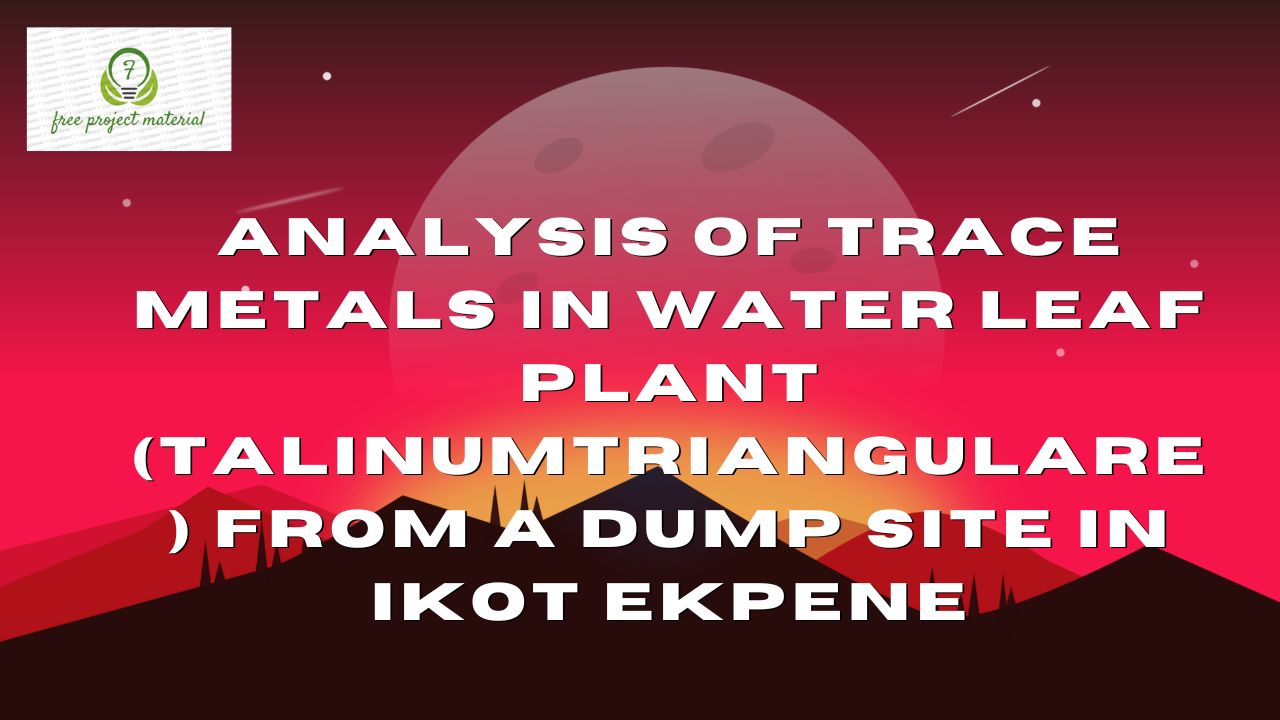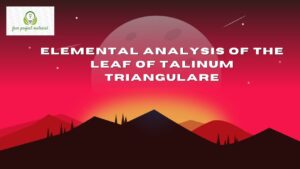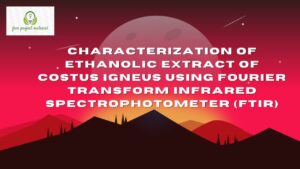ABSTRACT
The aim of this study is to determine the level of some trace metals in water leaf (Talinum triangulare) from a dump site and to assessed the implications to human health if consumed. The sample for the study was collected from Ikot Osurua village in Ikot Ekpene Local Government Area. Atomic Absorption Spectrophotometer (AAS) principle was used in carrying out the analysis. The result of the analysis revealed the following: Cd (0.0972 ± 0.0113mg/kg), Cr (0.2311±0.0035mg/kg), As (0.0796 ± 0.007mg/kg), Co (0.034±0.0035mg/kg) and Ni (0.001 ± 0.000mg/kg). When compared with WHO Standard, all the investigated metals are above the standard apart from Cobalt and Nickel. The consumption of Talinum triangulare harvested from waste dumpsite should be discouraged to avoid human health risk.
TABLE OF CONTENTS
Title page – – – – – – – –
Certificate – – – – – – – –
Dedication – – – – – – – –
Acknowledgements – – – – – – –
Abstract – – – – – – –
Table of Contents – – – – – – –
Chapter One: Introduction
1.1 Background of the Study – – – – –
1.2 Aim and Objectives of the Study – – – –
1.3 Scope and limitations of the Study – – – –
Chapter Two: Literature Review
2.1 Botanical Classification of Talinumtriangulare – –
2.2 Chemical Composition of Talinumtriangulare – –
2.3 Nutritional and Health Benefits of Talinumtriangulare –
2.4 Biological Uses and the Function of Talinumtriangulare –
2.5 Toxic Effects of Heavy Metals – – – –
2.5.1 Mercury – – – – – – –
2.5.2 Lead – – – – – – –
2.5.3 Chromium – – – – – – –
2.5.4 Cadmium – – – – – – –
2.5.5 Arsenic – – – – – – –
2.5.6 The Carcinogenicity of Heavy Metals – – –
Chapter Three: Materials and Method
3.1 Materials and reagents – – – – –
3.2 Methods – – – – – – –
3.2.1 Sample Collection and Preparation – – – –
3.2.2 Sample Digestion – – – –
3.2.3 Determination of Trace Metals in the Sample – –
Chapter Four: Result and Discussion
4.1 Result – – – – – – – –
4.2 Discussion – – – – – – –
Chapter Five: Conclusion and Recommendations
5.1 Conclusion – – – – – – –
5.2 Recommendation – – – – – –
References
CHAPTER ONE
1.1 Background of the Study
The contamination of soil and vegetables by heavy metals is a global environmental issue. Heavy metals are generally referred to as those metals that possess a specific density of more than 5g/cm3 and adversely affect the environment and living organisms (Jarup; 2003). Heavy metals, being persistent and non-biodegradable, can neither be removed by normal cropping nor easily leached by rain water (Khadeejaet al. 2003).
They might be transported from soil to ground waters or may be taken up by plants, including agricultural crops. For this reason, theknowledge of metal-plant interactions is also important for the safety of the environment (Divrikliet al. 2006). Source of anthropogenic contamination include the addition of manures, sewage sludge, fertilizers and pesticides to soils.
Several studies has identified the risks in relation to increased soil metal concentration and consequent plant uptake (Whatmuff; 2002, McBride; 2003).
Heavy metals concentrations in soil are associated with biological and geochemical cycles and are influenced by anthropogenic activities such as agricultural practices, industrial activities and waste disposal methods (Ndiokwere and Ezehe, 1990; Zauyahet al. 2004, Usman et al. 2002, Ejaet al. 2003). Contamination and subsequent pollution of the environment by toxic heavy metals has become an issue of global concern due to their sources, wider spread distribution and multiple effects on the ecosystem (Nriargu, 1990).
Studies have shown that soils at refuge dumpsites contain different kinds and concentrations of heavy metals, depending on the age, contents and location (Udosenet al. 1990; Odukoyaet al. 2009). In recent times, it has been reported that heavy metals from waste dumpsites can accumulate and persist in soils at an environmentally hazardous levels (Alloway, 1996, Amusanet al. 2005). In Nigeria, leachates from refuge constitute a source of heavy metal pollution to both soil and aquatic environment (Odukoyaet al. 2000 and Oni, 1987). Nevertheless, most abandoned waste dumpsites in Nigeria and Uyo have been used extensively as fertile grounds for cultivating varieties of vegetables.
Even though, research works have indicated that some common vegetables are capable of accumulating high levels of heavy metals from contaminated and polluted soils (Cobb et al.,2000, Xiong, 1998; Garcia et al., 1981; Benson and Ebong, 2005). This constitutes serious health and environmental concern because of the phytotoxicity of these metals to the plants and the potentially health implications to human and animals consuming such vegetables (Pillayet al., 2003).
Water leaf (Talinumtriangulare) is one of the most common leaf vegetables in Nigeria. It is available almost throughout the year, even during the dry season, because of its ability to survive droughts. It is a perennial herbaceous plant widely grown and consumed as a vegetable (Wilberforce, 2016). Studies have shown that waterleaf contains important nutrients and phytochemicals such as flavonoids and polyphenols, crude protein, lipids essentials oils, cardiac glycosides, omega-3-fatty acids, minerals, soluble fibres and vitamins (Swarnaji and Ravindhran, 2013). The availability and nutritional composition make it one of the most sought vegetables.
1.2 Aims and Objectives of the Study
The aim of this study is to determine the trace metal composition in water leaf plant (Talinumtriangulare) from a dumpsite in Ikot Ekpene. This would be achieved through the following objectives.
The objectives of this study are;
- To determine the level of some trace metals in the water leaf (Talinumtriangulare) sample from the dumpsite.
- To make useful recommendations based on the findings of this study.
- To assess the implications to the health of humans and animals consuming such plant because of the phytotoxicity of these metals in the plants.
1.3 Scope and Limitations of the Study
The study is limited to the analysis of trace metal in water leaf plant (Talinumtriangulare) obtained from a dumpsite in Ikot Ekpene. The level of the metals in soil sample and the physicochemical analysis of the soil sample may not be considered in this study.This is due to time and financial constraint.



